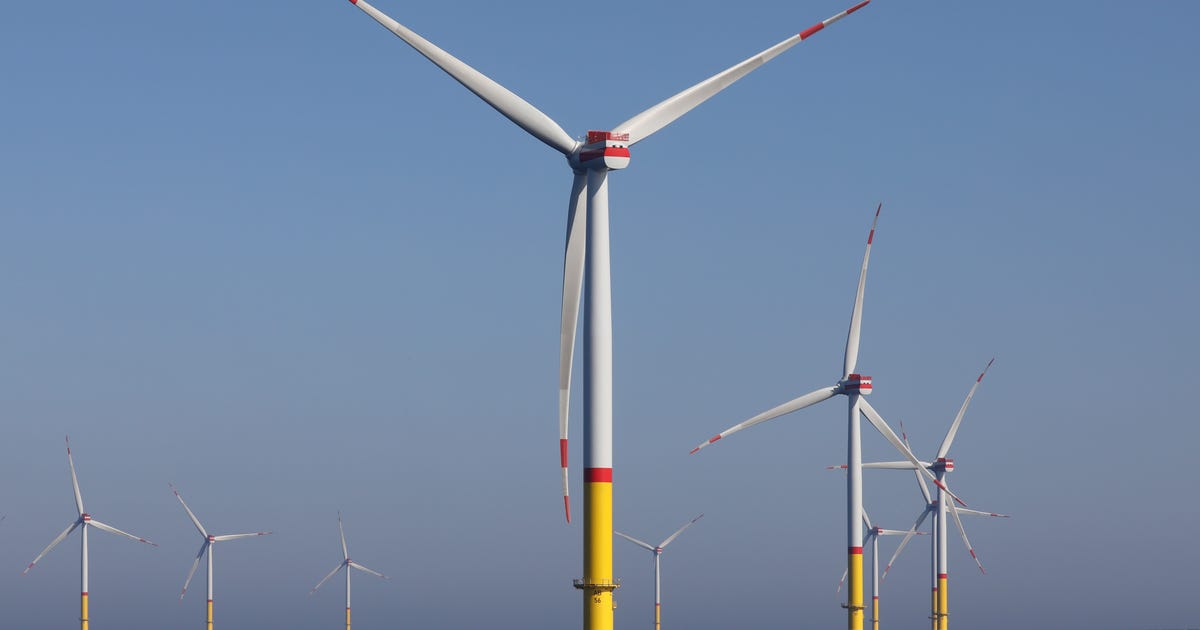Picture Alliance / Getty
The Biden administration previously promised to build 30 gigawatts of offshore wind by 2030. On Wednesday, the administration revealed how that lofty goal will be met. At a conference on wind energy in Boston, Secretary of the Interior Deb Haaland unveiled a plan that would see a series of wind farms developed along the east and west coasts of the country, as well as in the Gulf of Mexico.
Haaland says the Department of the Interior plans to maintain lease sales by 2025 for seven potential farms off the coasts of California, Oregon, New York, Main, the mid-Atlantic and the Gulf of Mexico. Officials have not declared how much electricity the farms are expected to produce, but said the seven potential farms could reduce carbon emissions by 78 million tons and create as many as 77,000 jobs.
“The Department of the Interior is charting an ambitious roadmap as we advance the administration’s plans to tackle climate change, create high-paying jobs, and accelerate the nation’s transition to a cleaner energy future,” he added. Haaland said. “We have big goals to achieve a clean energy economy and Interior is meeting the moment.”
The administration’s plan for 30 gigawatts of wind power by 2030 would bring it in line with Europe, which has 25 gigawatts of offshore wind power spread over 12 countries. At present, offshore wind energy produces 42 megawatts of electricity in the US..
It is the latest in a series of steps the Biden administration has taken to clear America’s path toward carbon neutrality. Last month the Department of Energy published a report proposing that solar power will produce 40% of US electricity by 2035, up from 3% in 2020. In May, the administration approved the first US offshore wind farm. approximately 12 miles offshore from Martha’s Vineyard. In addition to building 30 gigawatts of offshore wind capacity, the Biden administration also plans to approve 25 gigawatts of onshore renewable energy by 2025.
The biggest climate actions would be part of two infrastructure bills Congress is currently debating, with provisions that include a clean energy tax credit system and tariffs for oil and gas companies that emit methane.
Wednesday announcement anticipates the United Nations Climate Change Conference, or COP26, where world leaders will meet in Glasgow to negotiate climate agreements. The Paris Agreement, in which the signatories pledged to reduce emissions to keep global warming below 2 degrees, was signed at COP21 in 2015.
